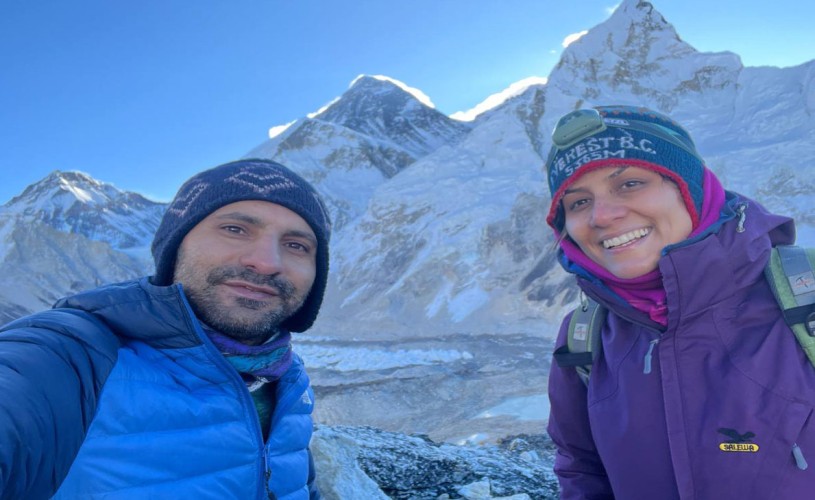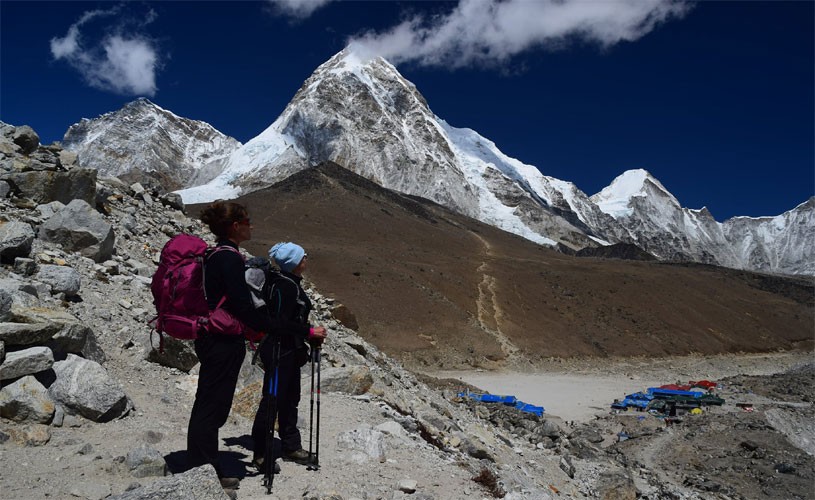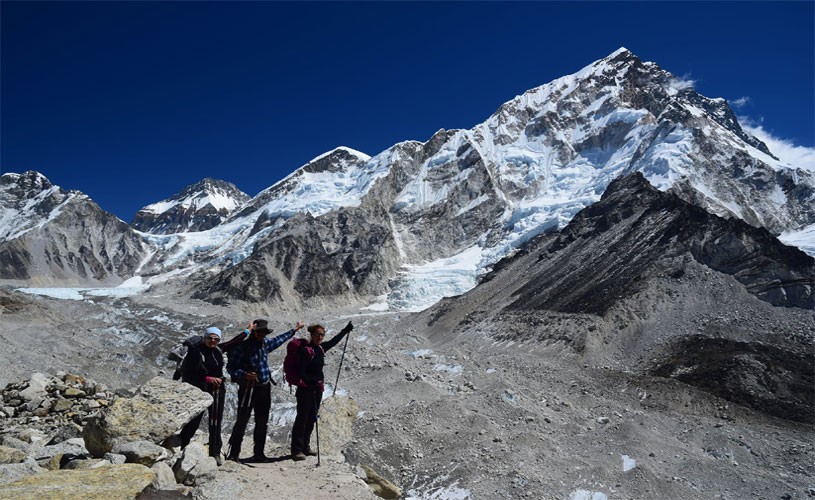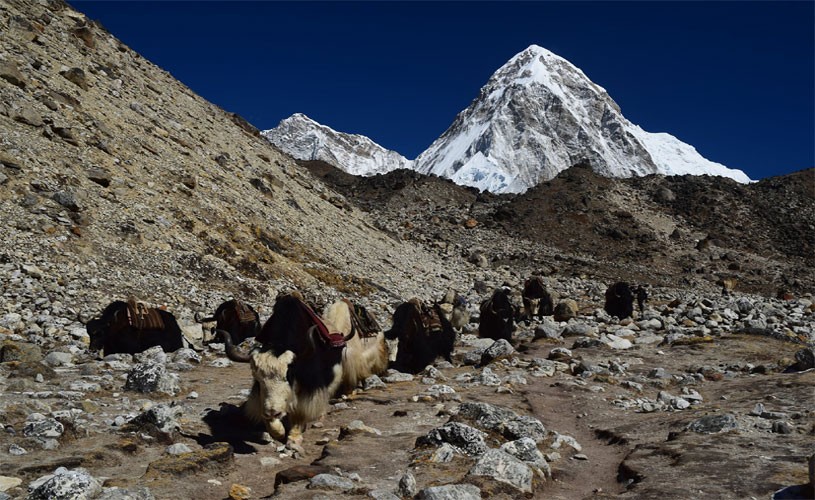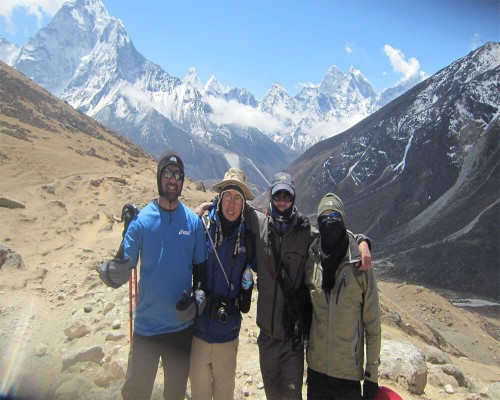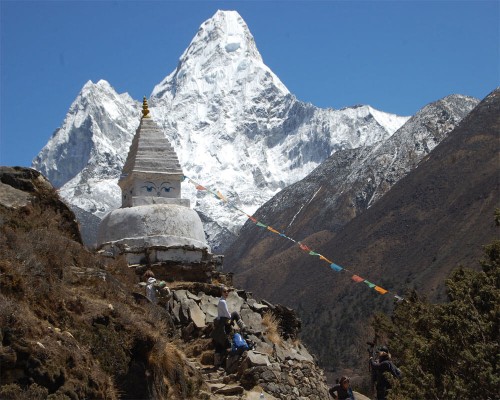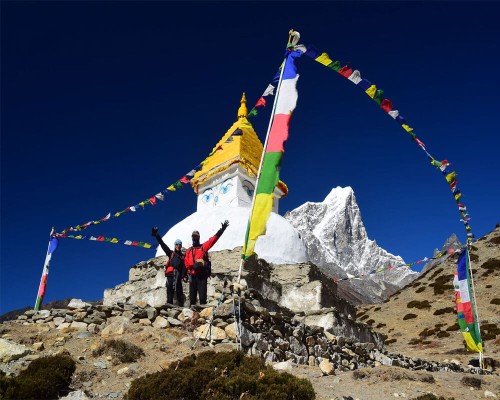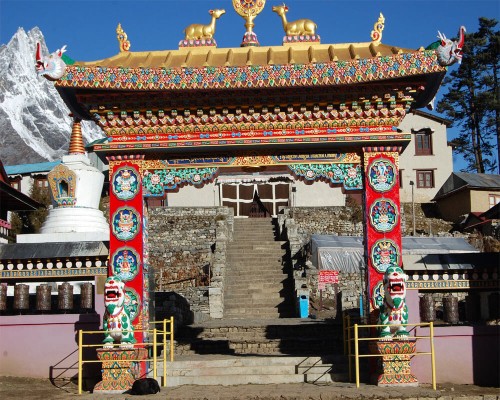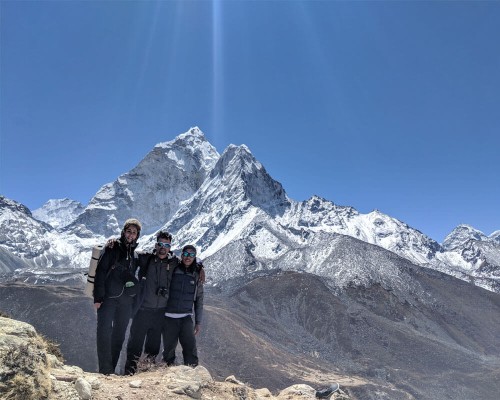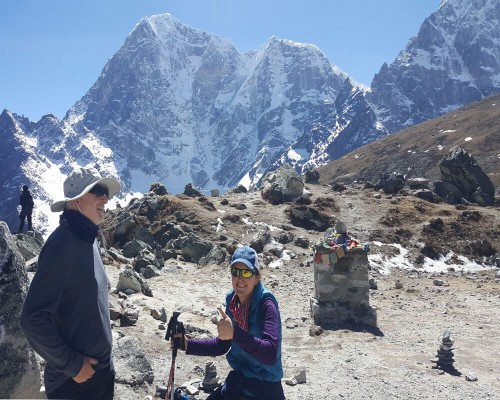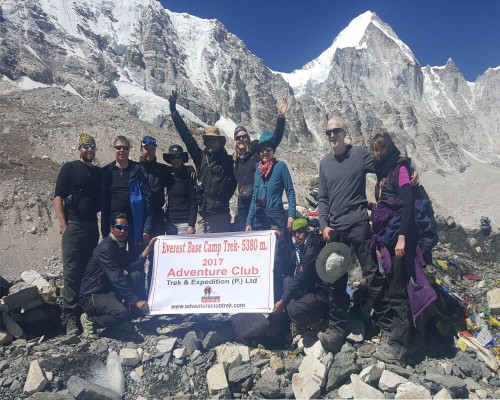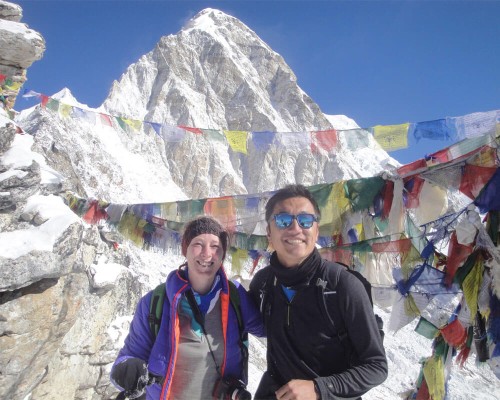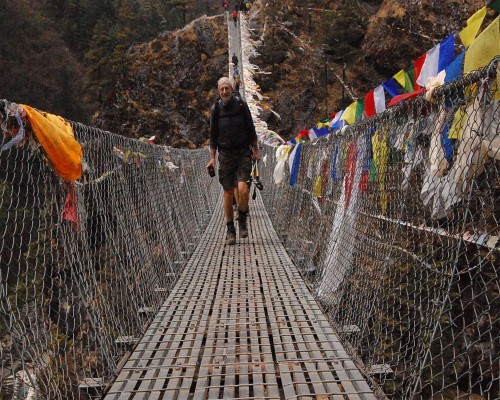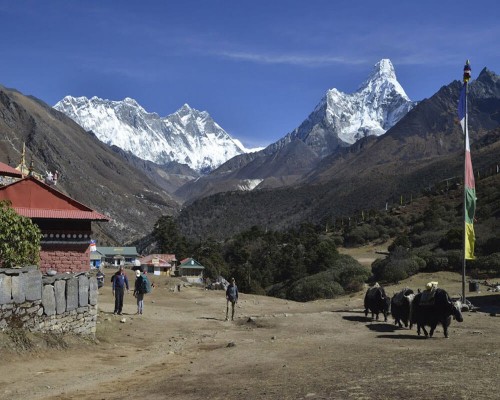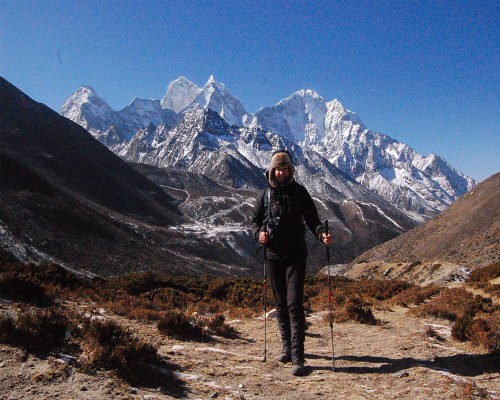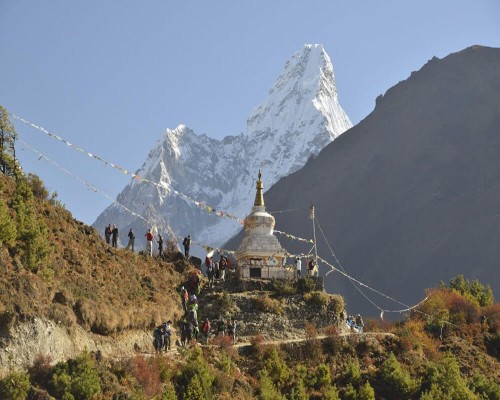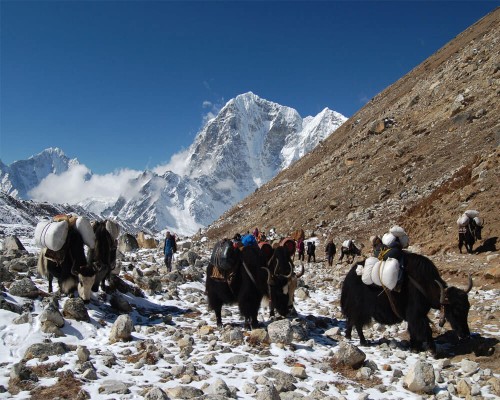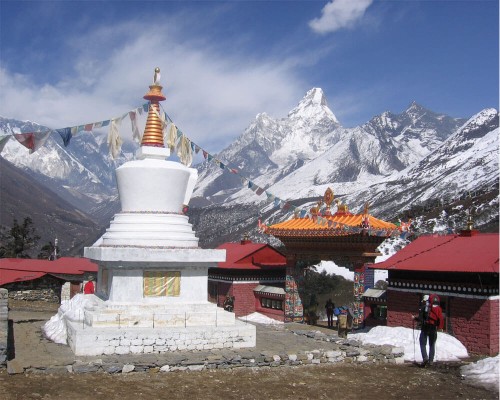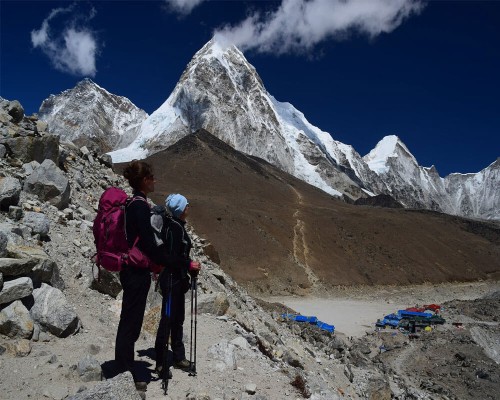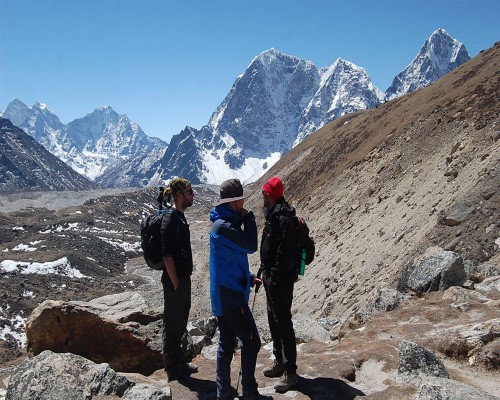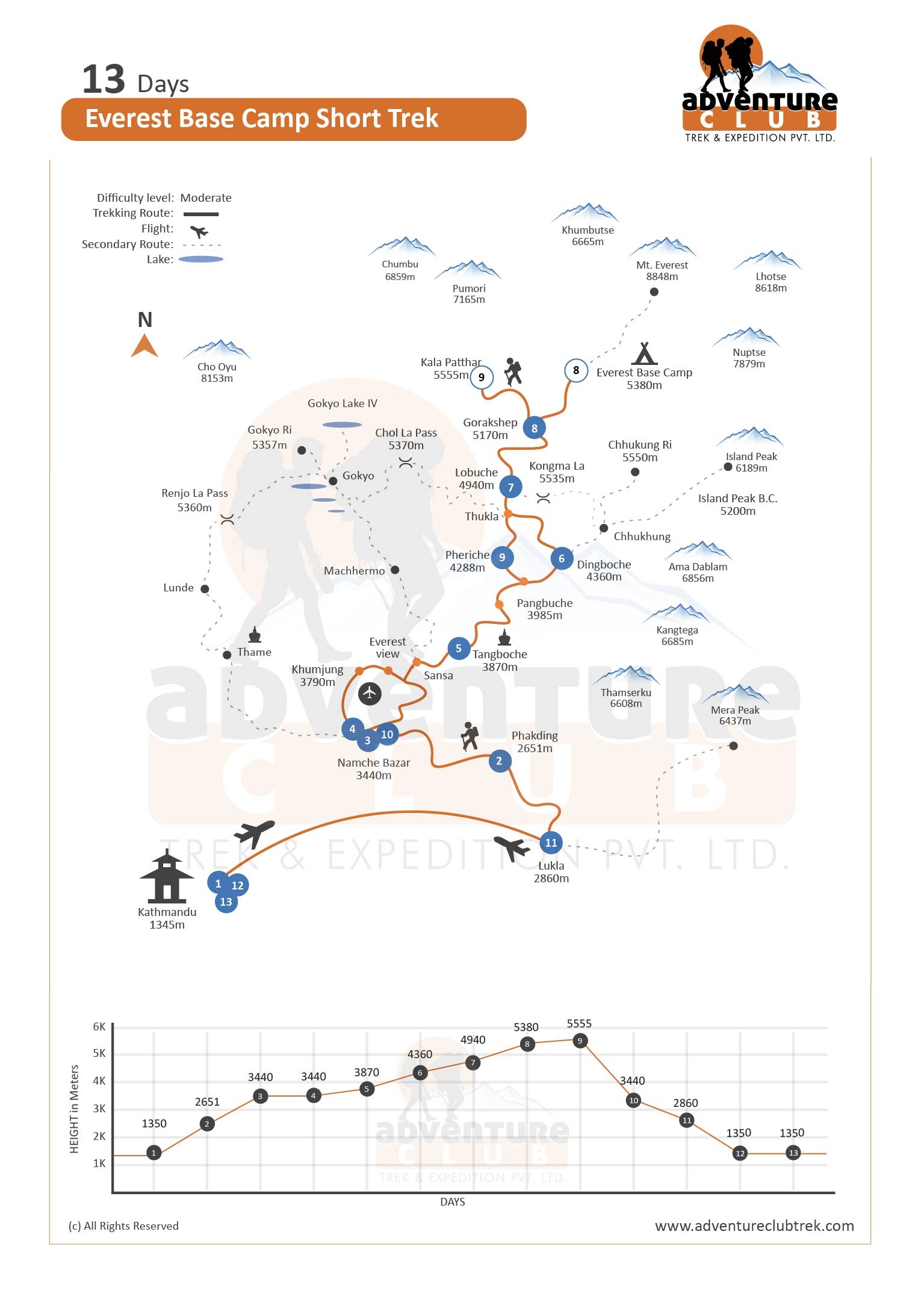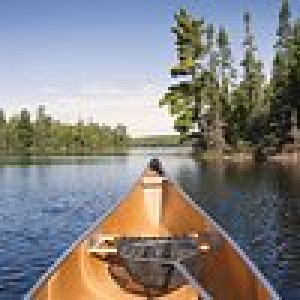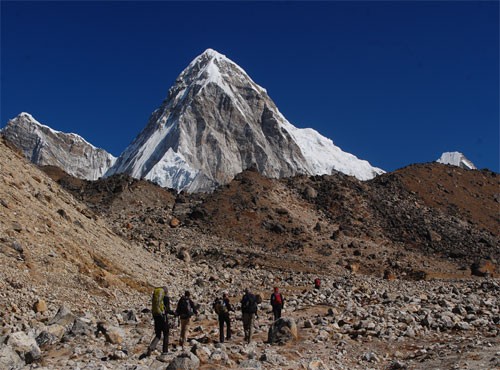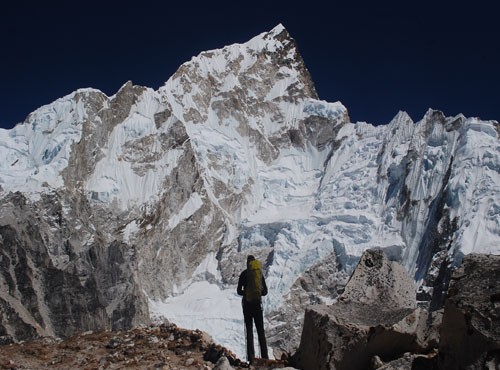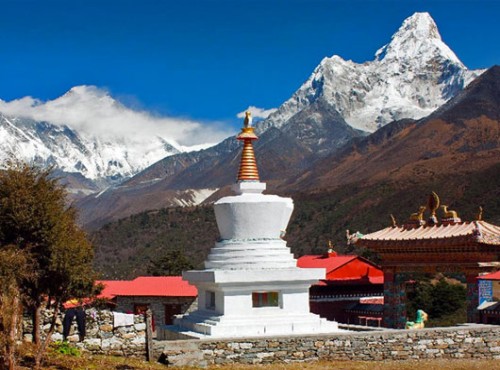Highlights of the Everest Base Camp Trek
- Amazing Himalayan flight to and from Lukla
- Beautiful landscapes in the lower Khumbu zone
- Trekking through the Dudh Koshi River Valley
- Experiencing the cultural aura of Khumjung and the Khumjung Monastery
- Witnessing the Mt Everest View from Everest View Hotel
- Visiting the Pangboche and Tengboche Monasteries
- Sagarmatha National Park: Explore diverse flora, fauna, and unique wildlife.
- Namche Bazaar: A bustling Sherpa town with great food, shops, and markets.
- Kala Patthar Viewpoint: Experience the best panoramic views of Everest and nearby peaks.
- Khumbu Glacier & Icefall: Witness the majestic icy landscapes of the Everest region.
- Kala Patthar Viewpoint: Experience the best panoramic views of Everest and nearby peaks.
Everest Base Camp Short Trek -13 Days Best Price 2025/2026
The Everest Base Camp Trek (13 Days) is an incredible adventure that takes you to the foot of Mount Everest (8,848m), the tallest mountain on Earth. This trek offers breathtaking mountain views, high-altitude Sherpa villages, and a journey through Sagarmatha National Park, a UNESCO World Heritage Site since 1979. Along the way, trekkers visit historic Buddhist monasteries like Tengboche and Pangboche, experiencing the rich culture of the Himalayas.
The journey begins with a scenic flight from Kathmandu to Lukla, where the trekking adventure starts. The trail winds through beautiful Sherpa villages, dense forests, high suspension bridges, and rocky mountain landscapes. Trekkers pass through key locations such as Namche Bazaar, Tengboche, Dingboche, and Gorak Shep before reaching Everest Base Camp via the Khumbu Glacier.
After landing at Tenzing-Hillary Airport in Lukla, the trek follows a diverse and scenic trail passing through Phakding, Benkar, Monjo, Jorsale, and more. Trekkers cross suspension bridges covered in colorful prayer flags and enter Sagarmatha National Park at Monjo. From here, the trail follows the Dudh Koshi River, leading to Namche Bazaar, known as the Thamel of Everest because of its lively atmosphere, shops, and stunning mountain scenery. After a day of acclimatization, the trek continues to Tengboche Monastery, offering spiritual experiences and unforgettable views of Everest, Ama Dablam, and surrounding peaks.
The next stops include Dingboche and Lobuche, leading to Gorak Shep and finally Everest Base Camp, the closest point to the world’s highest mountain. A hike to Kala Patthar offers the best sunrise view over Everest and the glittering snow-covered peaks. Trekkers also get clear views of the Khumbu Glacier, Khumbu Icefall, glacial rivers, and avalanche zones.
For those looking to avoid retracing their steps, our Everest Base Camp Trek with Helicopter Return offers a 12-day itinerary that includes a thrilling helicopter ride from Gorakshep to Lukla. Everest Base Camp marks a significant milestone, offering the unforgettable experience of standing at the foot of the world's highest peak. Additionally, Kalapatthar provides breathtaking views of Everest and other iconic peaks like Makalu, Lhotse, Nuptse, and Ama Dablam. If you prefer a more challenging route with isolated valleys and glacial lakes, our Everest Base Camp Trek via Gokyo Lake and Cho La Pass (18 days) is an excellent choice.
Descending from Everest, trekkers immerse themselves in the authentic Sherpa lifestyle, learning about their traditions, history, and mountaineering heritage. The trek ends back in Lukla, followed by a return flight to Kathmandu, marking the completion of an unforgettable Himalayan adventure. Embark on this once-in-a-lifetime Everest Base Camp adventure and experience the thrill of trekking in the Himalayas, breathtaking mountain landscapes, and the vibrant Sherpa culture!
Our professional guides and porters are committed to delivering an unforgettable trekking experience with top-tier service. Contact us for more details—we're here to make your Everest adventure extraordinary.
The Best Time to trek Everest Base Camp Trek
Spring (March- May) and autumn ( October- November)are The best seasons for a Short Everest Base Camp trek. During these seasons, the weather is usually clear, allowing for breathtaking views of the Himalayas. The days are warmer, but the nights can be quite cold. In spring, the temperature in Namche Bazaar (at 3440 meters) is typically around 3-9 degrees Celsius (37-48°F), while in autumn, it can drop below zero at night, but the days are pleasant for walking.
Winter brings a more adventurous experience but is colder, with temperatures often falling below zero, even during the day. Snowfall is expected in Lukla. However, trekking in December and January is a good choice if you prefer fewer crowds. The monsoon season is considered the off-season for trekking to Everest Base Camp. However, some lower-altitude treks can still be done during the monsoon.
Accommodation during the Everest Base Camp Trek
Accommodation is essential for trekkers in the Himalayas, providing a place to rest and rejuvenate after a tiring day. The 13-day Short Everest Base Camp Trek raises questions about the arrangements for staying along the trail. The trek offers various lodges and tea houses, typically featuring basic structures. These accommodations usually provide double or twin-sharing rooms with mattresses, sheets, pillows, blankets, or quilts. Our package includes Tea house accommodation, which offers more comfortable bedrooms and better facilities than the lodges. The type of accommodation varies as you traverse the Khumbu region.
You can expect cozy dining areas in the lower regions to have bonfires and attached bathrooms. However, as you ascend to higher elevations, the facilities won't become simpler, with standard toilets. It's worth noting that the toilets are often located outside, which can be inconvenient during cold nights. We can make arrangements if you desire a private room, but an additional fee for the entire room is required. However, this option is only available during the off-season.
Meals during the Everest Base Camp Trek
All meals, including breakfast, lunch, and dinner, will be provided throughout the trek. However, breakfast will only be served in Kathmandu. We organize welcome and farewell dinners for our guests. Breakfast and dinner will be served during the trek at tea houses or lodges, where we will stay overnight. At the same time, lunch will be provided at tea houses along the way. You can choose from cuisines such as Nepali, continental, Tibetan, and Indian. We prioritize your well-being by ensuring that you receive nutritious meals. We give preference to locally sourced organic food and offer seasonal fruits. If you are a vegetarian, please inform us in advance so we can make suitable arrangements for your food preferences during the trek.
Drinking Water during the Everest Base Camp Trek
Adventure Club takes care of all meals during the trek but does not provide water. The recommended option is to treat the local water using chlorine, iodine tablets, or a steripen. The tea houses along the trail provide good quality water for free, but treating it before consuming it is important. If you use tablets, ensure they dissolve completely, which usually takes around 30 minutes. On most treks, you can purchase mineral water along the trail. At lower-elevation tea houses, a liter of mineral water costs approximately USD 1. However, the price can go up to $4 at higher elevations so that expenses can accumulate.
Permits Required for 13 Days Everest Base Camp Trek
To trek to Everest Base Camp, you need two permits: the Sagarmatha National Permit and the Khumbu Rural Municipality Permit.
The Sagarmatha National Permit is necessary because the trekking route passes through Sagarmatha National Park. You can get this permit from the entry gate in Monjo or the Tourist Service Center in Kathmandu. The permit cost is NPR 3000 (USD 30) for foreigners, NPR 1500 (USD 15) for SAARC countries, and NPR 100 for Nepalese. These prices do not include a 13% VAT.
The Khumbu Rural Municipality Permit is required to enter the Khumbu region. You can buy this permit in Lukla or Monjo. For foreigners, the permit costs NPR 2000 (USD 20) per person for the first four weeks and NPR 2500 (USD 25) afterward. Please note that this permit is not available in Kathmandu.

